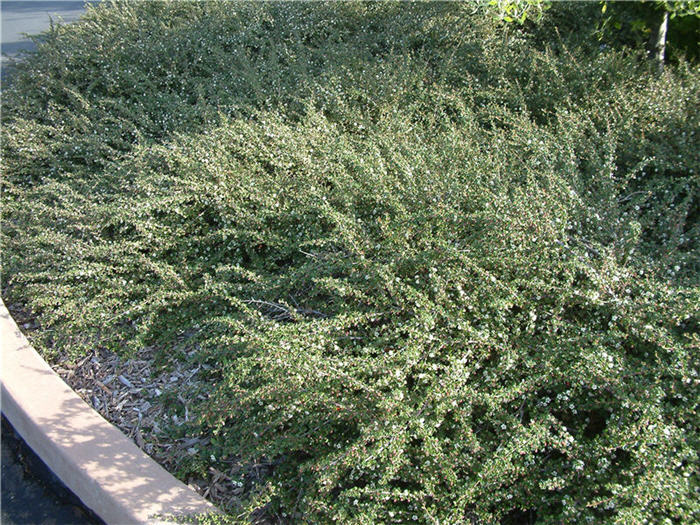| Botanical Name: Cotoneaster congestus | |
| Common Name: Pyrenees Cotoneaster |

-
Anatomy
-
Culture
-
Design
Plant Type
Broadleaf Evergreen, Shrub, Ground cover
Height Range
1-3'
Flower Color
Pink, White
Flower Season
Spring
Leaf Color
Dark Green
Bark Color
Brown
Fruit Color
Red
Fruit Season
Winter, Fall
Sun
Full, Half
Water
Low
Growth Rate
Moderate
Soil Type
Sandy, Clay, Loam, Rocky, Unparticular
Soil Condition
Average, Rich, Poor, Well-drained, Dry
Soil pH
Neutral, Basic
Adverse Factors
n/a
Design Styles
Formal, Japanese, Mediterranean, Ranch, Spanish
Accenting Features
Showy Flowers
Seasonal Interest
Winter, Spring, Fall
Location Uses
Entry, Shrub Border, Foundation, Parking Lot, Raised Planter, Walls / Fences, With Rocks
Special Uses
Cascade, Erosion Control, Hedge, Mass Planting, Small Spaces
Attracts Wildlife
n/a
Information by: Stephanie Duer
Photographer:
Photographer:
-
Description
-
Notes
Pyrenees cotoneaster is a low-growing, compact, dense, evergreen shrub. The branches arch up and then curve down, forming a compact, rounded mass. The leaves are dull green to blue-green; spring flowers are pinkish white and are followed by round, red berries that persist into winter. Well suited to rock gardens, or the edges of shrub borders. Grows about 1-1/2 to 2-1/2 feet tall and wide.
Grow in any well-drained soil in full to part sun. Wide range of soil tolerance, and pH tolerant. Branches root where they touch the ground. Cotoneaster get very woody if sheared, so prune selectively to control size and shape; see Guides.